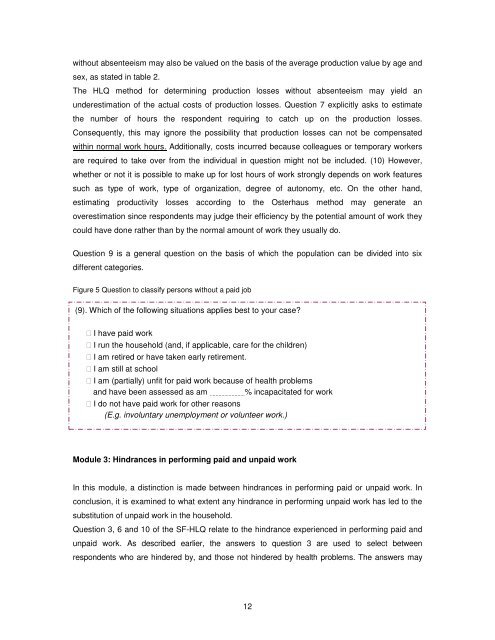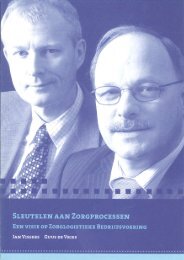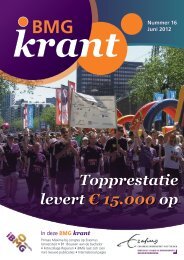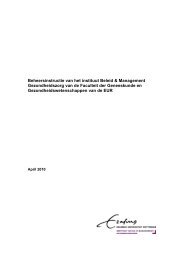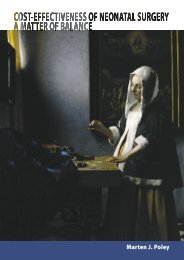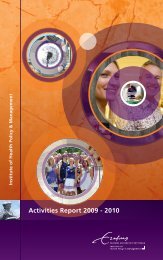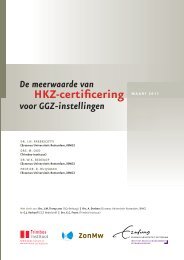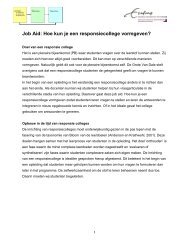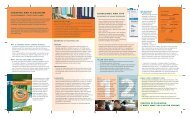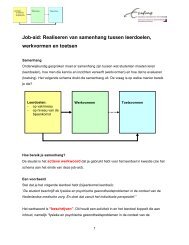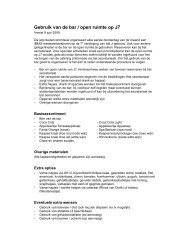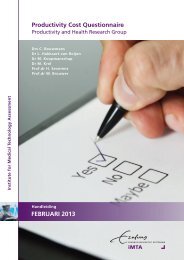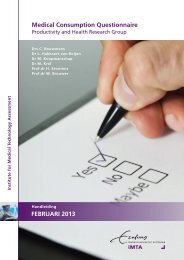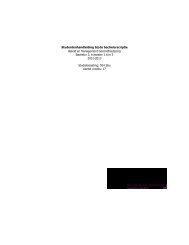Manual Short Form- Health and Labour Questionnaire (SF-HLQ)
Manual Short Form- Health and Labour Questionnaire (SF-HLQ)
Manual Short Form- Health and Labour Questionnaire (SF-HLQ)
You also want an ePaper? Increase the reach of your titles
YUMPU automatically turns print PDFs into web optimized ePapers that Google loves.
without absenteeism may also be valued on the basis of the average production value by age <strong>and</strong>sex, as stated in table 2.The <strong>HLQ</strong> method for determining production losses without absenteeism may yield anunderestimation of the actual costs of production losses. Question 7 explicitly asks to estimatethe number of hours the respondent requiring to catch up on the production losses.Consequently, this may ignore the possibility that production losses can not be compensatedwithin normal work hours. Additionally, costs incurred because colleagues or temporary workersare required to take over from the individual in question might not be included. (10) However,whether or not it is possible to make up for lost hours of work strongly depends on work featuressuch as type of work, type of organization, degree of autonomy, etc. On the other h<strong>and</strong>,estimating productivity losses according to the Osterhaus method may generate anoverestimation since respondents may judge their efficiency by the potential amount of work theycould have done rather than by the normal amount of work they usually do.Question 9 is a general question on the basis of which the population can be divided into sixdifferent categories.Figure 5 Question to classify persons without a paid job(9). Which of the following situations applies best to your case? I have paid work I run the household (<strong>and</strong>, if applicable, care for the children) I am retired or have taken early retirement. I am still at school I am (partially) unfit for paid work because of health problems<strong>and</strong> have been assessed as am ........................ % incapacitated for work I do not have paid work for other reasons(E.g. involuntary unemployment or volunteer work.)Module 3: Hindrances in performing paid <strong>and</strong> unpaid workIn this module, a distinction is made between hindrances in performing paid or unpaid work. Inconclusion, it is examined to what extent any hindrance in performing unpaid work has led to thesubstitution of unpaid work in the household.Question 3, 6 <strong>and</strong> 10 of the <strong>SF</strong>-<strong>HLQ</strong> relate to the hindrance experienced in performing paid <strong>and</strong>unpaid work. As described earlier, the answers to question 3 are used to select betweenrespondents who are hindered by, <strong>and</strong> those not hindered by health problems. The answers may12


